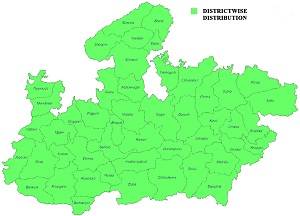| Bungarus caeruleus (Schneider, 1801) |
| Common Indian Krait |
 |
|
Diagnostic characters:
|
| Head round; slightly broader than neck; scale smooth, vertebral scale row enlarged, hexagonal; eye entirely black. Glossy black, pale faded bluish-grey or dark-brownish-black above (often with blue iridescence) with narrow (sometimes paired) white bands that continue to pointed tip of short tail. Bands usually absent on fore body or they are replaced by white vertebral spots. SVL: 1200mm. |
| Habit and Habitat: |
| Nocturnal; alert and active at night; often found in farms and gardens near water. Termite mounds, rodent burrows, piles of brick and rubble are other places to encounter. |
| Diet: |
| Feeds mainly on snakes even other kraits, sometimes rodents, lizards and frogs are also taken. |
| Legal Protection: |
| WL (P) A, 1972-Schedule IV. |
| Conservation status and Threats: |
| Not accessed. Uncommon. No serious threat observed. |
 |
Distribution: Madhya Pradesh: Throughout. Elsewhere in India: Most of the mainland India up to 1700 m. Elsewhere outside: Pakistan, Nepal, Bangladesh and Afghanistan |